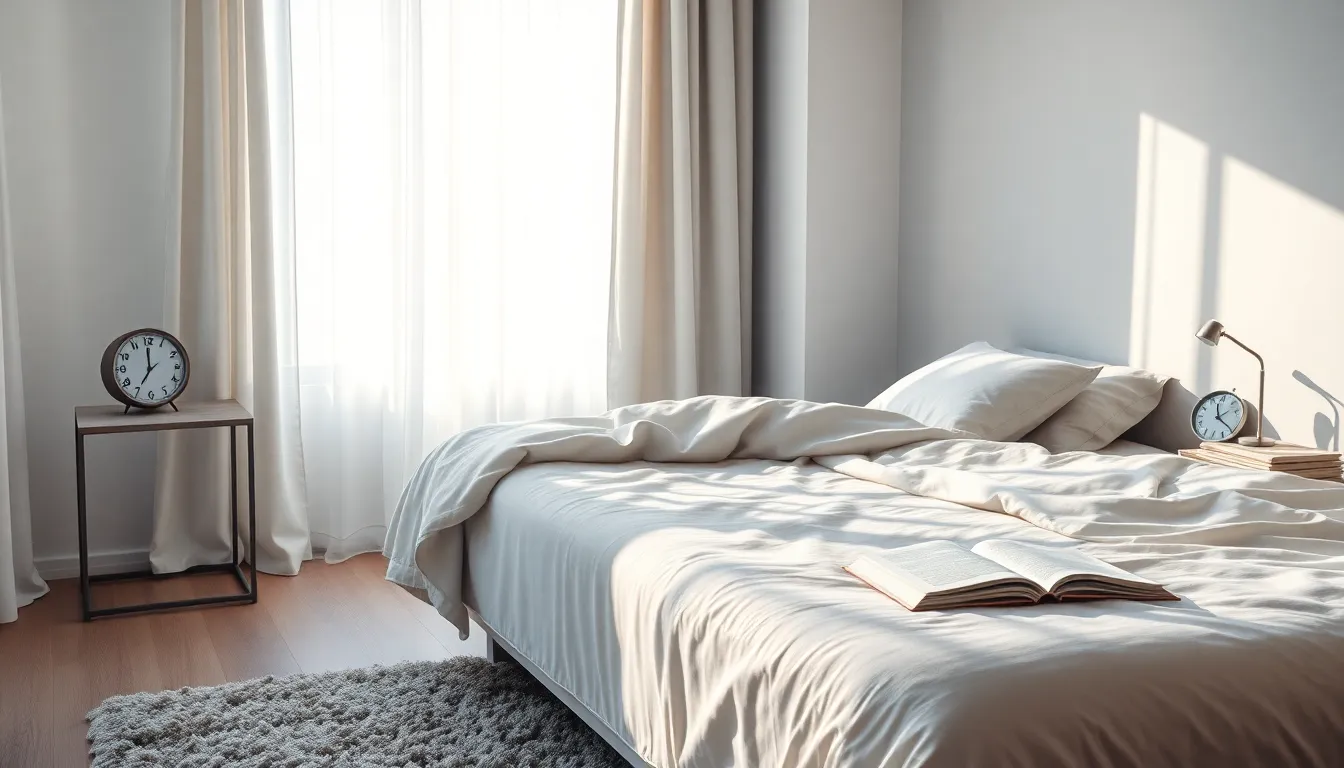Table of Contents
ToggleIn the hustle and bustle of modern life, the pursuit of productivity often overshadows one crucial element: rest. It’s tempting to believe that powering through fatigue is a badge of honor, but let’s face it, who wants to become a grumpy, over-caffeinated zombie? This article dives into the importance of taking a good rest, exploring physical and mental health benefits, signs that indicate it’s time for a break, and the best strategies for incorporating rest into daily life. Get ready to discover how a little downtime can work wonders.
The Importance Of Rest

Rest may seem like a luxury in today’s fast-paced world, but it’s a necessity. Understanding its significance can lead to a healthier, happier life.
Physical Health Benefits
First off, let’s talk about the physical perks. Proper rest aids in recovery and repair. This isn’t just about a good night’s sleep: it’s about allowing the body to heal and rejuvenate. When we sleep, our muscles recover, and our immune system gets a boost. Skipping out on rest can lead to a range of issues, from fatigue to chronic illnesses. Think of your body as a high-performance engine: without regular maintenance, even the best engine will sputter.
Mental Health Benefits
Now, shift gears to mental health. Taking a good rest helps reduce anxiety, depression, and stress levels. A tired brain struggles to function efficiently. When an individual is well-rested, they can tackle problems with clarity, creativity, and emotional balance. Imagine trying to navigate a maze blindfolded. Without proper rest, that’s exactly what decision-making feels like.
Improved Productivity
Finally, consider productivity. It might sound counterintuitive, but working longer hours doesn’t equal getting more done. Numerous studies show that regular rest leads to increased efficiency. When individuals give themselves time to recharge, they often return refreshed, with better focus and motivation. A well-rested mind is not only sharper but also more innovative, turning grueling tasks into manageable ones.
Signs You Need A Good Rest
Recognizing when to rest can be tricky, especially when society glorifies the grind. But, there are clear signs to watch for before burnout sets in.
Physical Signs
First, let’s highlight some physical clues. If someone notices increased fatigue, persistent headaches, or muscle tension, those are significant indicators that they need to rest. Their body is waving a little white flag, pleading for a pause. Ignoring these messages can lead to chronic health issues and prolonged recovery times.
Emotional Signs
Emotional cues are equally important. Feelings of irritability, frustration, or a lack of enthusiasm signal it’s time to step back. When someone finds joy in their passions slipping away, that’s a red flag. A quick break can provide the fresh perspective needed to reignite that spark.
How To Take A Good Rest
Taking a good rest is more than just hitting the snooze button. It’s about creating an environment and routine conducive to relaxation and recovery.
Creating A Restful Environment
To start, think about the space where rest occurs. A peaceful setting can significantly enhance relaxation. Consider calming colors, greenery, and comfortable bedding. Soft lighting often works wonders. The goal is to cultivate a sanctuary, your own personal retreat where distractions fade away, allowing for true tranquility.
Incorporating Rest Into Your Routine
Now, let’s weave rest into the fabric of daily life. It doesn’t have to be a massive time investment. Scheduling small breaks throughout the day can help maintain energy levels. Whether it’s a quick walk, a few minutes of stretching, or simply closing one’s eyes for a moment, each pause adds up. Integrating these tiny moments can recharge someone’s spirit and prepare them for the tasks ahead.
Techniques For Relaxation
Beyond a cozy environment, there are specific techniques individuals can adopt to promote relaxation and reduce stress effectively.
Mindfulness And Meditation
One popular approach is mindfulness and meditation. These practices help anchor one’s awareness in the present moment, reducing racing thoughts that often accompany stress. Just a few minutes a day can dramatically shift one’s state of mind. Guided apps or classes make meditation accessible for beginners, so there’s no excuse not to try.
Breathing Exercises
Alongside mindfulness, breathing exercises can also be transformative. Practicing deep, rhythmic breathing slows the heart rate, allowing for immediate calm. Techniques such as the 4-7-8 method can refocus attention and ease anxiety. Filling the lungs completely and releasing it slowly enhances oxygen flow, providing a natural stress-reliever.
Sleep Hygiene Practices
Good rest extends beyond napping or occasional lazy days. It involves refining sleep practices to ensure quality slumber.
Establishing A Sleep Schedule
To start, establishing a consistent sleep schedule can work wonders. Going to bed and waking up at the same time daily helps regulate the body’s internal clock. This consistency makes falling asleep and waking up much smoother, leading to deeper and more restorative sleep.
Optimizing Your Sleep Environment
Next, consider optimizing the sleep environment. Ensure that the bedroom is cool, dark, and quiet. Using blackout curtains, reducing noise, and finding the right mattress can create an ideal setting. These adjustments can eliminate disturbances, paving the way for restful nights.







